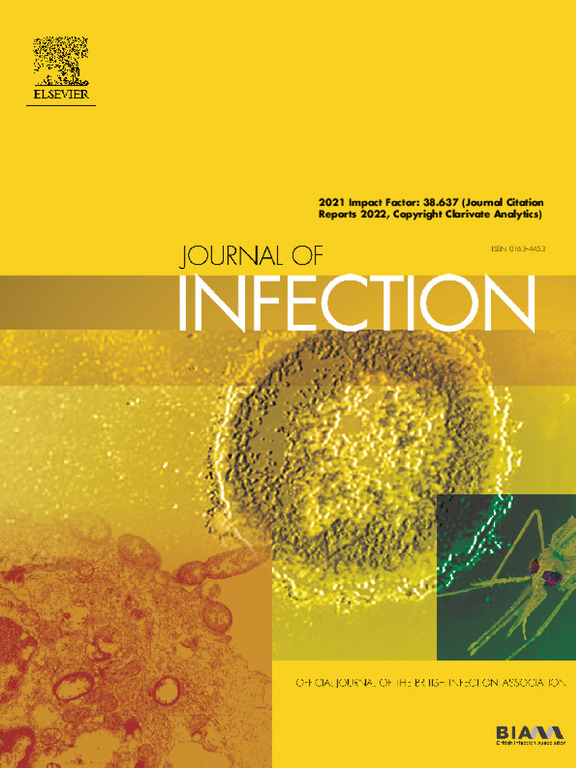Detection of tick-borne encephalitis virus RNA in patient samples at different stages of infection
IF 14.3
1区 医学
Q1 INFECTIOUS DISEASES
引用次数: 0
Abstract
Objectives
The aim of the study was to evaluate the efficiency of molecular diagnostics of tick-borne encephalitis (TBE) and to correlate viral RNA (vRNA) detection with the clinical and laboratory data.
Methods
Clinical samples from 1125 patients from South Bohemia, Czech Republic, a highly endemic TBE region, were screened for TBE virus (TBEV) RNA by RT-qPCR. Samples included blood, serum, cerebrospinal fluid (CSF), and urine.
Results
TBEV RNA was detected in 14 patients with clinically proven TBE. TBEV RNA was most frequently detected in sera during early infection (11/37 patients tested, 29.7%) but decreased with rising IgG antibody response (3/228, 1.3%). Detection in CSF and urine was infrequent (1/30, 3.3% and 1/52, 1.9%, respectively). Additionally, five patients initially not diagnosed with TBE were retrospectively found to have TBEV RNA in serum, indicating possible underdiagnosis, particularly in mild or atypical presentations. The study also highlighted the diagnostic challenge of an immunocompromised patient whose delayed antibody response hindered timely diagnosis. In such cases, RT-qPCR could significantly shorten the diagnostic timeline.
Conclusions
These findings underscore the value of early RNA detection in improving the diagnosis of TBE and may in the future facilitate the early administration of potential treatment, thereby improving patient outcomes.
不同感染阶段患者标本中蜱传脑炎病毒RNA的检测。
研究目的该研究旨在评估蜱传脑炎(TBE)分子诊断的效率,并将病毒 RNA (vRNA) 检测与临床和实验室数据联系起来:方法:采用 RT-qPCR 方法对捷克共和国南波西米亚(蜱传脑炎高流行区)1125 名患者的临床样本进行了蜱传脑炎病毒 (TBEV) RNA 检测。样本包括血液、血清、脑脊液(CSF)和尿液:结果:14 例经临床证实的 TBE 患者均检测到 TBEV RNA。在感染早期,血清中最常检测到 TBEV RNA(11/37 例患者,29.7%),但随着 IgG 抗体反应的升高,TBEV RNA 的检测率有所下降(3/228 例患者,1.3%)。在脑脊液和尿液中检测到的情况并不多见(分别为 1/30,3.3% 和 1/52,1.9%)。此外,有五名最初未被诊断为 TBE 的患者在回顾性检查中发现血清中含有 TBEV RNA,这表明可能存在诊断不足的情况,尤其是在病情轻微或不典型的情况下。该研究还强调了免疫功能低下患者的诊断难题,他们的抗体反应延迟阻碍了及时诊断。在这种情况下,RT-qPCR 可以大大缩短诊断时间:这些发现强调了早期 RNA 检测在改善 TBE 诊断方面的价值,并可能在未来促进潜在治疗的早期实施,从而改善患者预后。
本文章由计算机程序翻译,如有差异,请以英文原文为准。
求助全文
约1分钟内获得全文
求助全文
来源期刊

Journal of Infection
医学-传染病学
CiteScore
45.90
自引率
3.20%
发文量
475
审稿时长
16 days
期刊介绍:
The Journal of Infection publishes original papers on all aspects of infection - clinical, microbiological and epidemiological. The Journal seeks to bring together knowledge from all specialties involved in infection research and clinical practice, and present the best work in the ever-changing field of infection.
Each issue brings you Editorials that describe current or controversial topics of interest, high quality Reviews to keep you in touch with the latest developments in specific fields of interest, an Epidemiology section reporting studies in the hospital and the general community, and a lively correspondence section.
 求助内容:
求助内容: 应助结果提醒方式:
应助结果提醒方式:


